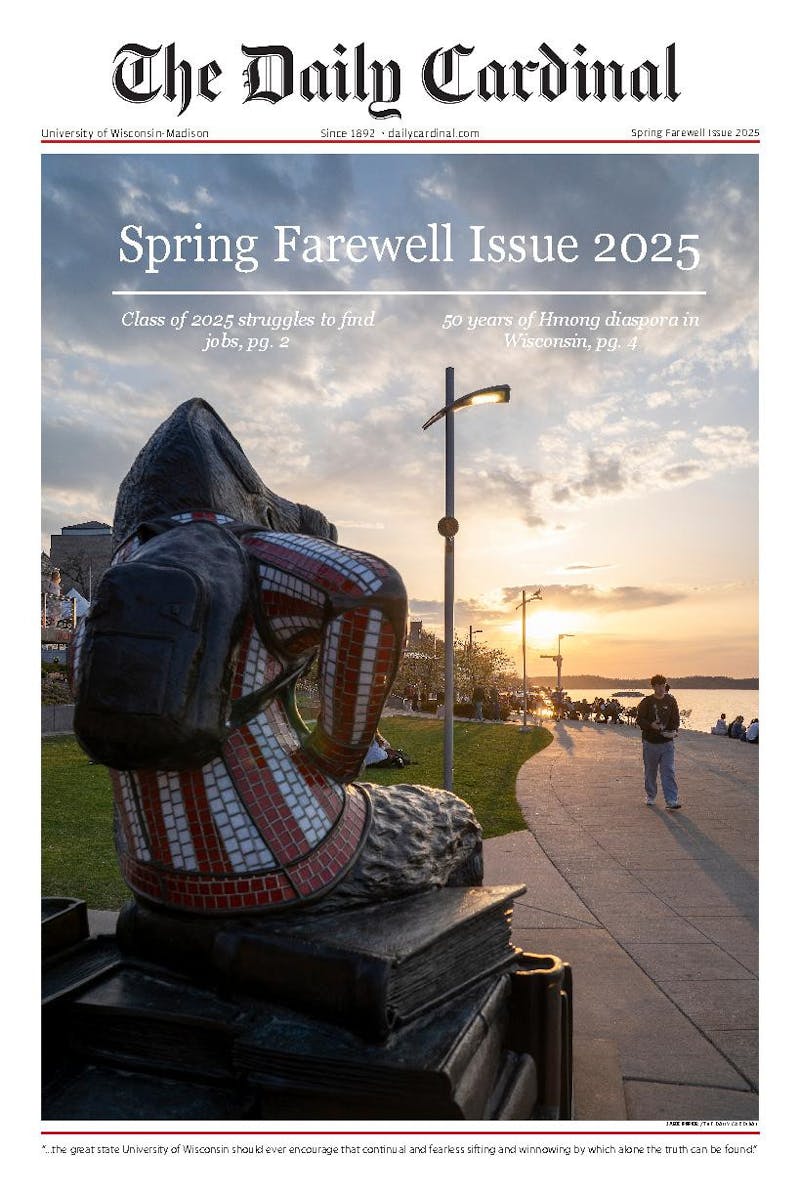Tuition in 2000 for a freshman at UW-Madison was $1885. In 2008 it is $3,785, rising 5-6 percent more next year. It seems, as with most things these days, that the cost of education is increasing at a rate faster than the average family and student can keep pace with. Add up all the academic year living costs and the result looks something like this: $7,570 (tuition), $4,050 (rent & utilities), $600 (books), $2,700 (groceries) and $1,500 (SHIP insurance) equals around $16,500. Assuming you qualify for the Stafford Loan program, you are eligible to receive up to $12,500 per year. You are still out $4,000, not to mention any money needed for extraneous spending, like travel, weekends out, a special date, etc.
Chancellor Biddy Martin and Wisconsin are to be commended for trying to take progressive action, ensuring our state university system stays affordable. Thanks to an additional boost of $38 million in state aid, families making under $60,000 will not experience a tuition increase next year. And under the well-received new Madison Initiative for Undergraduates, which proposes a supplemental tuition charge, tuition is held harmless for families making under $80,000. Also, the Initiative creates a much-needed, need-based financial-aid fund.
The new Madison Initiative is a great starting point for more serious discussions on what Martin has called ""the access affordability problem."" However, creating a needs-based financial aid pot, in turn helping more families offset the costs of tuition, cannot be the sole answer to this problem. As reported before, tuition costs nationwide have increased 439 percent since 1982, and the average cost of a four-year public education is around 25 percent of the annual income of a middle-class family. These price increases are unsustainable in the long term no matter how big the financial aid pot gets. It is unwise, in the face of inevitably increasing costs, to continue dependence on both the hope for ever increasing pools of aid and the willingness of low-income undergraduates and their families to see the benefits of going even further into debt. Public universities like ours need to reach an economic equilibrium at some point; we have to continue to hold true to the Wisconsin Idea.
Instead of focusing on aid as the only piece of the puzzle to enable access, we need to critically analyze the whole tuition system. If the current flat tuition rate is going to continue to increase at rates the average family cannot keep up with, then we might need to change the way we all pay. The general consensus among most Americans is that the fairest, most just and efficient way of paying tuition in state schools is the one-price-fits-all approach we currently use. Another approach widely used for grants and loans is to means-test tuition. Means-tested tuition, broadly conceived, creates tuition brackets based upon family income. So, a family making $25,000 may pay $2,000 per year in tuition while a family making $250,000 may pay $20,000. Means-tested tuition helps mitigate the ""access and affordability problem"" by creating needed differentiation in tuition for lower-income families.
Although the details and nuances of such a program might be difficult to explicate, none are too onerous that reasonable legislatures and administrators couldn't overcome. But the principle is the key. We tend to think of the fairness of tuition in cost, believing everyone pays equally. But we may be getting it wrong. Fairness, properly conceived, is ensuring an equal opportunity for everyone to attend. It is right to equalize some of the arbitrary conditions that obstruct a student from attending college, such as obnoxious tuition costs. Economically, ensuring an equal opportunity has potential benefits. It increases our potential pool of students, thus admitting higher-performing students, all of which may result in greater economic efficiency through the private investment in the individual and the creation of more societal ""human capital."" This may, in the long run, decrease university-wide costs as well (if we assume that instruction costs are inversely related to the ability of the institution's students), which could decrease tuition.
Regrettably, rising tuition costs are here to stay. If it is inconceivable that the pool of financial aid funds will continue to keep up with tuition costs (as has proven to be true), and if the current system creates disincentives toward higher education for lower-income families (as it clearly does), then the culprit may well be the pattern of payment we subscribe to. Means-testing tuition our state universities is probably our best way forward. At minimum, it should be part of the conversation. It is just, fair and efficient.
Joseph Koss is a junior majoring in secondary education in social studies. Please send responses to opinion@dailycardinal.com.





